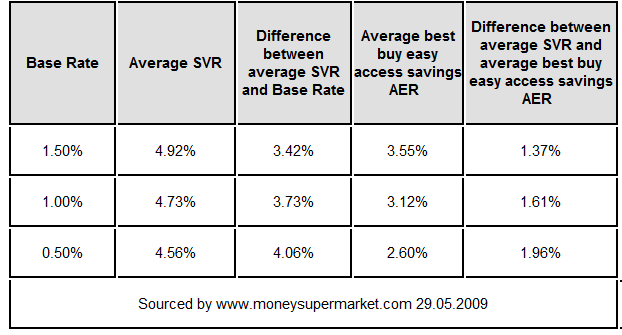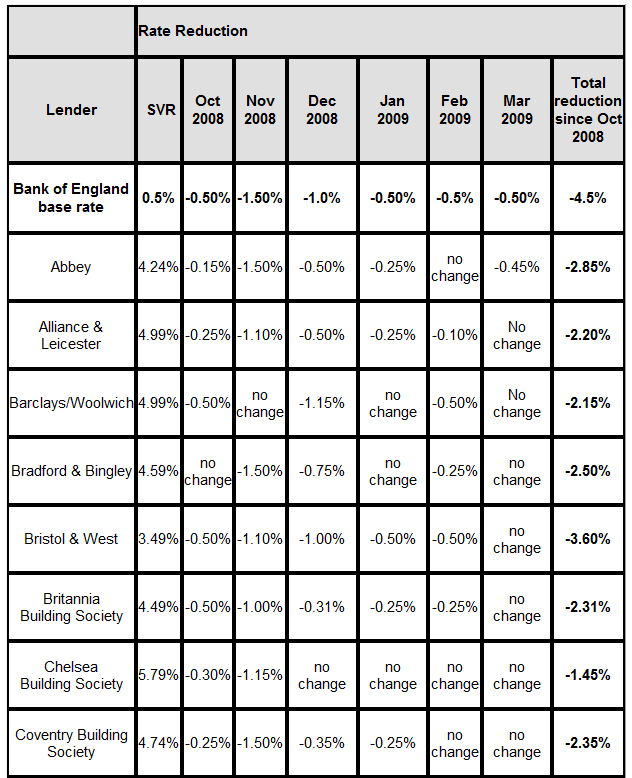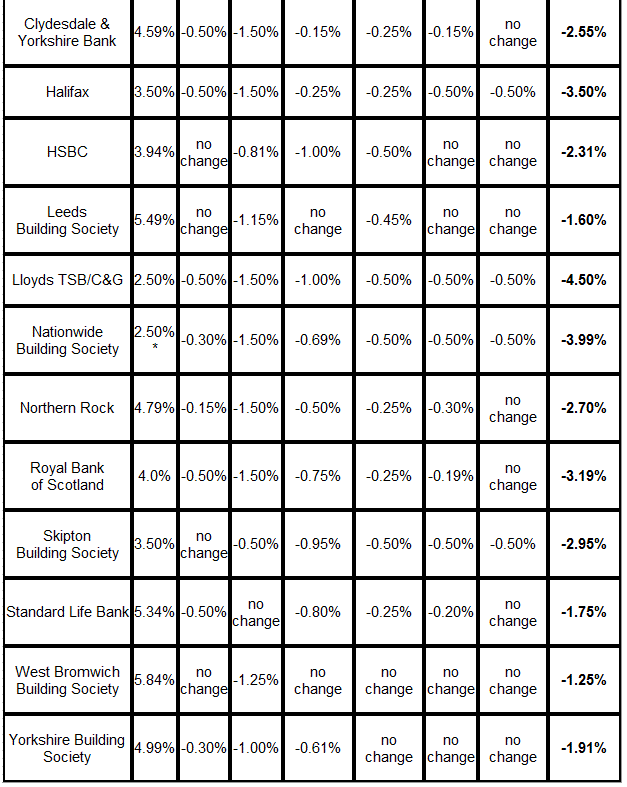Mortgage Lenders Fail to Pass On Base Interest Rate Cuts
Housing-Market / Mortgages Jun 07, 2009 - 07:18 AM GMTBy: MoneySupermarket
 Whilst the Bank of England has slashed interest rates by 4.5 percentage points since October, taking the base rate from 5.0 per cent to 0.5 per cent, mortgage lenders have failed to pass the cuts on in full to their existing customers, despite the Government urging them to do so.
Whilst the Bank of England has slashed interest rates by 4.5 percentage points since October, taking the base rate from 5.0 per cent to 0.5 per cent, mortgage lenders have failed to pass the cuts on in full to their existing customers, despite the Government urging them to do so.
- Lenders increasing margins despite static base rate
Since February 2009, for example, the Base Rate has fallen by one percentage point but the average Standard Variable Rate (SVR) has fallen by just 0.36 per cent, and the margin between the base rate and the average SVR has increased 0.64 per cent. In February this year SVRs were on average 3.42 percentage points above the Base Rate, but today it stands at 4.06 per cent above the Base Rate.
Interestingly, over the same period providers have passed on most of the Base Rate cuts to savers: the average best buy easy access savings account rate has fallen by 0.95 per cent (see table below). Providers have effectively widened margins by passing on almost all of the cuts to savers but less of the cuts to borrowers. In fact borrowers on "average SVR" are now paying nearly a full two per cent more than the average best buy savings account, compared to 1.4% earlier this year.

What's more the reduction in "average SVRs" masks a large disparity between lenders. There is now a three percentage point difference between the lowest and highest rate SVR products, which translates to £254.22 per month on a £150,000 mortgage. For example Nationwide Building Society's SVR now stands at 2.50%, whilst Chelsea's is 5.79%.
Louise Cuming, head of mortgages at moneysupermarket.com, said: "There is an increasing gulf between the lowest rate SVRs on the market and the highest as providers try to claw back profits.
"Consumers must be careful, the days of being able to safely assume you will automatically remortgage to another product as soon as your current deal ends are past, and many people might find themselves stuck on the SVR for a long time due to changing circumstances, and tightened eligibility criteria for the better deals. Therefore, people must pick their mortgage carefully and take the default SVR at the end of the deal into consideration.
"Buts what's good for the goose isn't good for the gander, and providers have decreased the AER on easy access savings accounts by greater than the decrease in interest rates as another way to increase profit margins."
The table below shows the changes made to SVRs by the 20 largest residential mortgage providers:


*For existing customers before May 2009.
The Price Comparison Site
Disclaimer: The above is a matter of opinion provided for general information purposes only and is not intended as investment advice. Information and analysis above are derived from sources and utilising methods believed to be reliable, but we cannot accept responsibility for any losses you may incur as a result of this analysis. Individuals should consult with their personal financial advisors.
© 2005-2022 http://www.MarketOracle.co.uk - The Market Oracle is a FREE Daily Financial Markets Analysis & Forecasting online publication.



